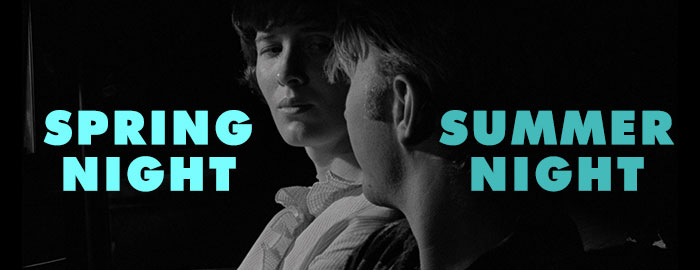

B&W, 1967, 83 mins. 43 secs.
Directed by Joseph L. Anderson
Starring Larue Hall, Ted Heimerdinger, Marjorie Johnson, John Crawford,
Indicator (Blu-ray) (UK R0 HD), Flicker Alley (Blu-ray) (US R0 NTSC) / WS (1.66:1) (16:9)
 delicate portrait of an American
delicate portrait of an American 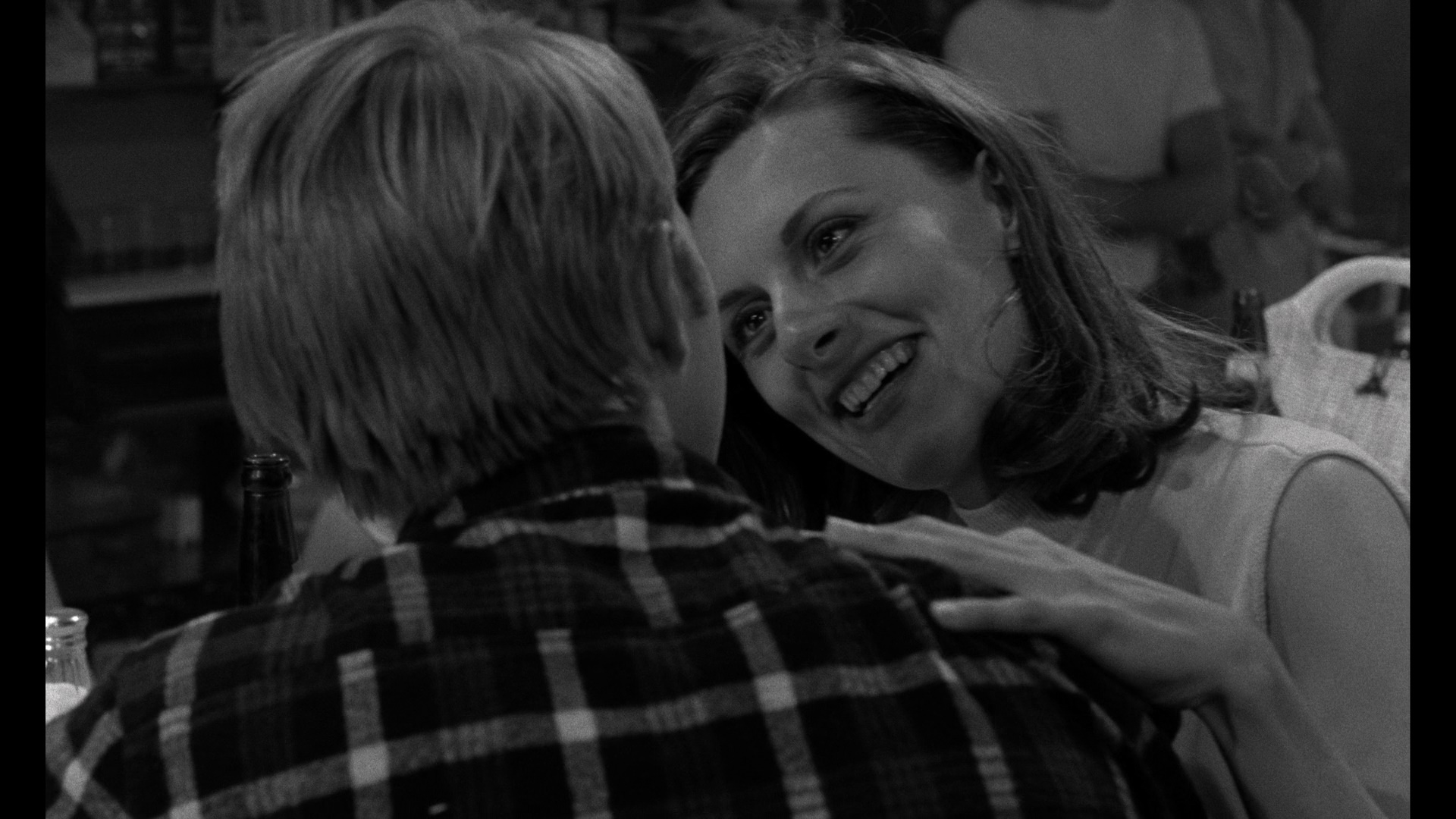 family in criss, Spring Night, Summer Night is a film few remembered or had even heard of at all until it surfaced in 2015 via a full-scale restoration from the UCLA Film & Television Archive and made its mass debut as a streaming title in 2019 on Nicholas Winding Refn's site, byNWR. When the film proved to have no commercial prospects at the time back in '67, director and film professor Joseph L. Anderson allowed the film to be reworked into a sexploitation variant called Miss Jessica Is Pregnant with a handful of nudie shots interspersed to make it more in line with the naughty country bumpkin films of the era. Fortunately his original version was restored (including the reinstatement of a shot accidentally omitted from the release cut), and it has since gotten the full red carpet treatment on Blu-ray to enhance your appreciation of this nearly extinct gem of Southern slice of life drama.
family in criss, Spring Night, Summer Night is a film few remembered or had even heard of at all until it surfaced in 2015 via a full-scale restoration from the UCLA Film & Television Archive and made its mass debut as a streaming title in 2019 on Nicholas Winding Refn's site, byNWR. When the film proved to have no commercial prospects at the time back in '67, director and film professor Joseph L. Anderson allowed the film to be reworked into a sexploitation variant called Miss Jessica Is Pregnant with a handful of nudie shots interspersed to make it more in line with the naughty country bumpkin films of the era. Fortunately his original version was restored (including the reinstatement of a shot accidentally omitted from the release cut), and it has since gotten the full red carpet treatment on Blu-ray to enhance your appreciation of this nearly extinct gem of Southern slice of life drama.  unsensationalized in its original form, this is a quiet but powerful film that captures a slice of life rarely seen without any stereotyping or blatant melodrama. Upon its rediscovery the film drew comparisons to John Cassavetes and Peter Bogdanovich, with the latter seeming a bit closer
unsensationalized in its original form, this is a quiet but powerful film that captures a slice of life rarely seen without any stereotyping or blatant melodrama. Upon its rediscovery the film drew comparisons to John Cassavetes and Peter Bogdanovich, with the latter seeming a bit closer 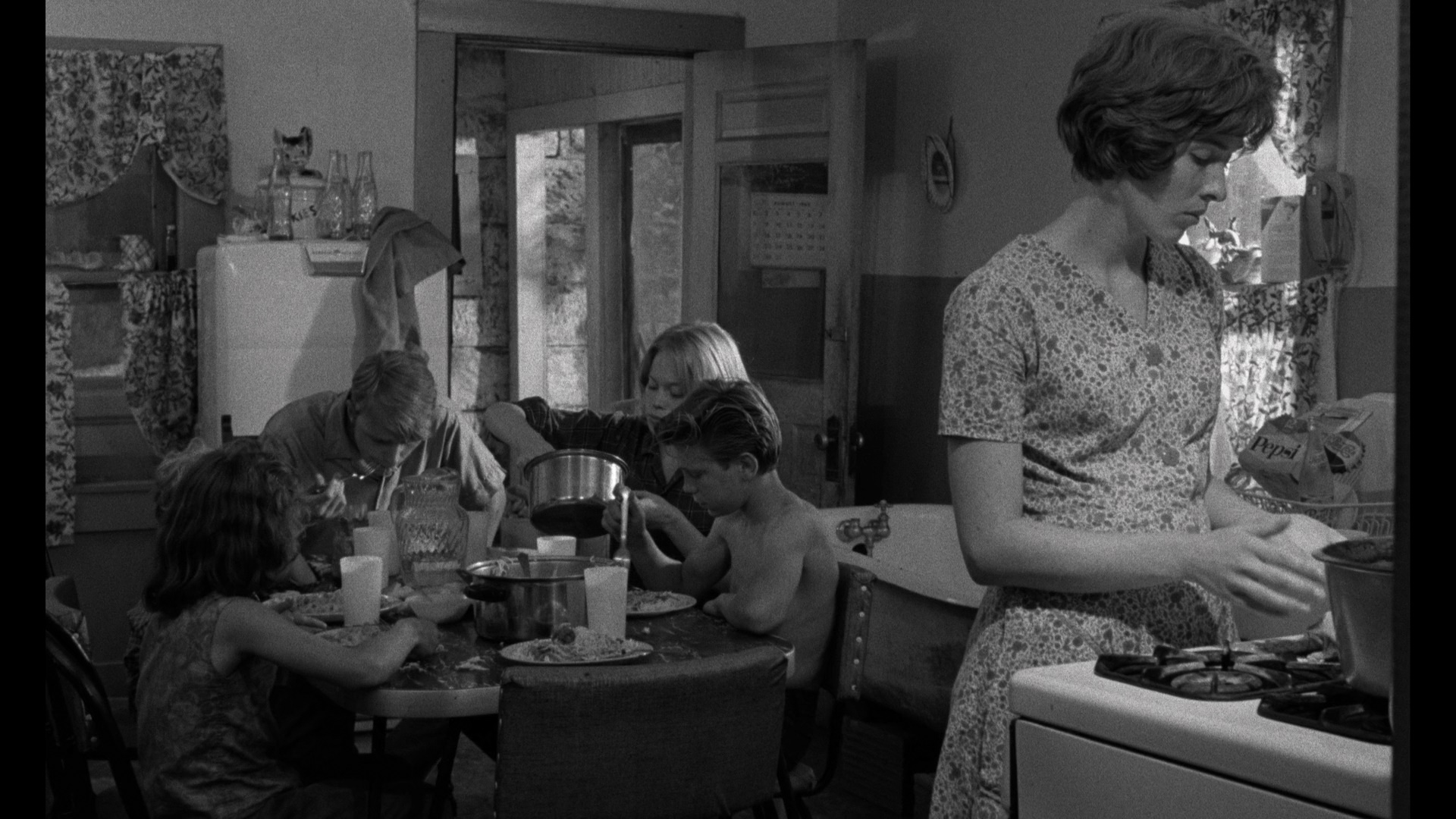 to the mark as a clear forerunner to the slowly dying Texas town and restless, hormonal youths in The Last Picture Show. It's a pretty unflinching depiction of the underbelly of American life (especially the neglected grandmother rocking away all day in front of a TV set), but there's also a feeling of mercy and humanity at play that keeps it from becoming utterly oppressive and downbeat. It's a shame Anderson never had a shot at making another feature as he reveals a keen visual sense here, including a poetic and eerie nocturnal finale whose atmosphere borders on the David Lynchian.
to the mark as a clear forerunner to the slowly dying Texas town and restless, hormonal youths in The Last Picture Show. It's a pretty unflinching depiction of the underbelly of American life (especially the neglected grandmother rocking away all day in front of a TV set), but there's also a feeling of mercy and humanity at play that keeps it from becoming utterly oppressive and downbeat. It's a shame Anderson never had a shot at making another feature as he reveals a keen visual sense here, including a poetic and eerie nocturnal finale whose atmosphere borders on the David Lynchian.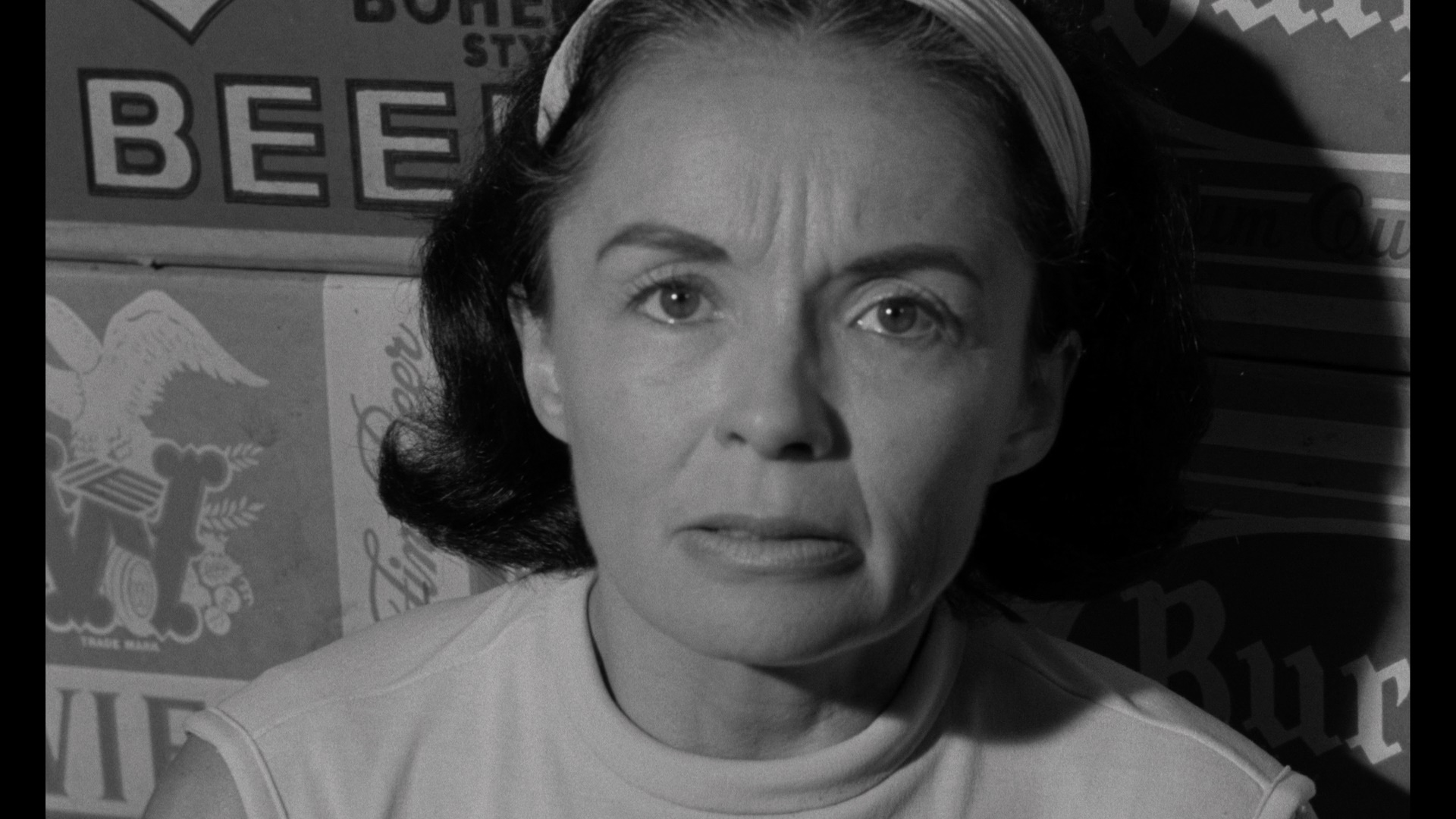 and outs of the casting and location scouting. The
and outs of the casting and location scouting. The 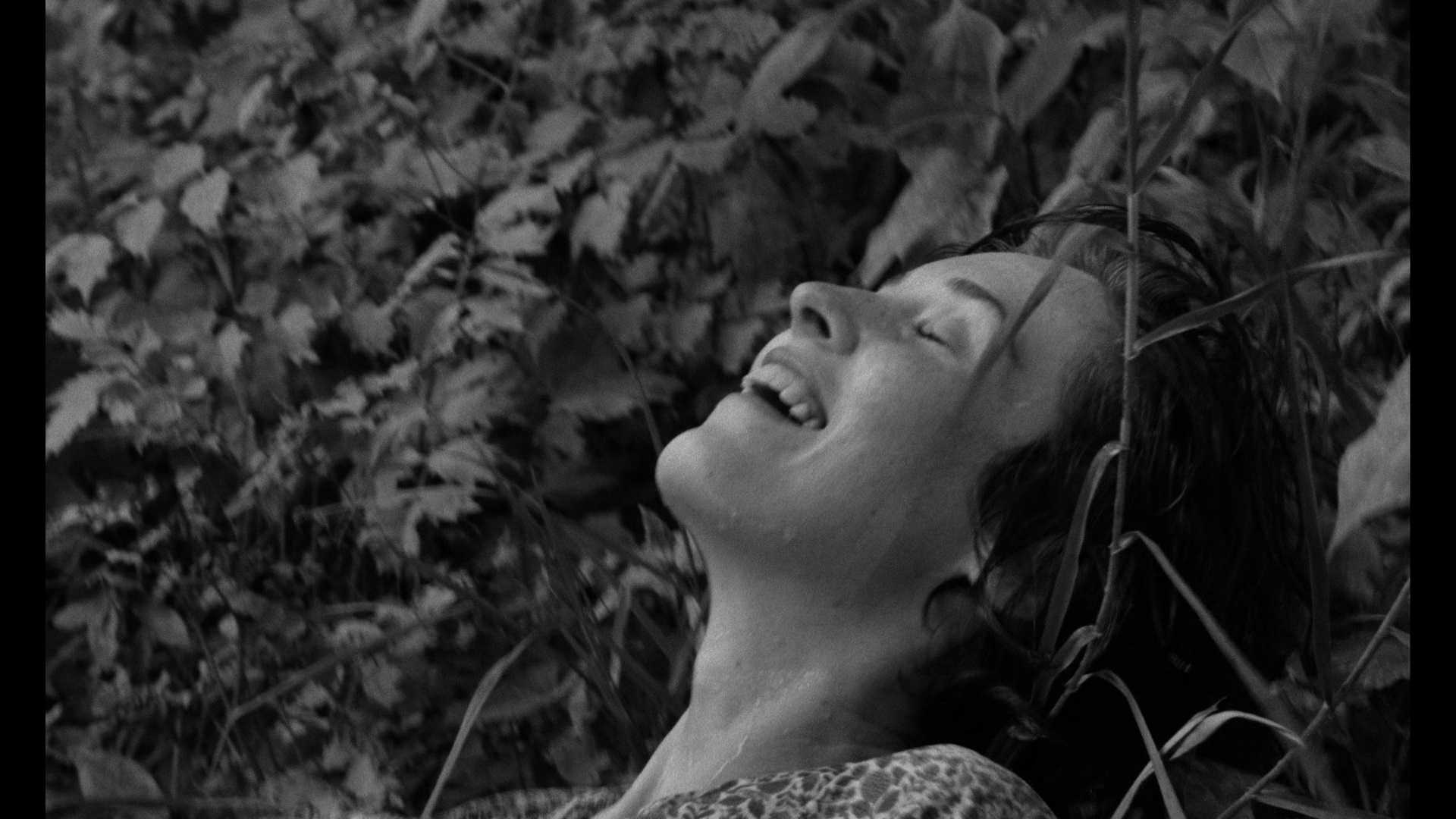 sound aspect is especially interesting, too, as you find out why you have to rerecord so much dialogue when you're shooting late at night out in the country. In the locations featurette "I'm Goin' to Straitsville" (14m7s), Franklin, Judy Miller, and archivist and restoration supervisor Peter Conheim cover the familiar locales in the present day including one that's been condemned by the health department. Restoration supervisor Ross Lipman's "In the Middle of the Nights" (13m19s) goes a very languid comparison between the original cut and the sexploitation one along with a string of outtakes; it's an interesting bit of contrasting to be sure, though it also makes one wish the full sexploitation version and all of the outtakes had been included in their entirety just for curiosity's sake. (Understandably, Anderson may not be such of fan of either.) A 2016 Q&A at the Cleveland Institute of Art Cinematheque (47m15s) features a panel of the same participants from the "50 Years" featurette reuniting for a screening and more casually swapping tales from the shoot, explaining how happy they were to be doing a movie and experiencing a surprising resurgence for this little passion project. A lengthy reel of 16mm behind-the-scenes footage (62m57s) can be played silent or with Miller and Conheim commentary pointing out the various crew members and locations; a highlight is seeing how they shot that creek scene, with the cameraman and other crew members carefully trudging around in the deep water without dropping any equipment. You also get three Anderson short films, all plotless slice of life snapshots (and two relying entirely on time lapse photography): "Football As It Is Played Today" (5m40s) from 1961, a look at an Ohio State University football game from prep to completion in record time; "How Swived" (5m26s), a bluesy 1962 chronicle of a housewife's daily routine from morning to late afternoon; and "Cheers" (5m6s), a look at the basketball game routine of a cheerleader squad. An image gallery is also included with 68 promotional and production photos, while the package comes with a booklet featuring new liner notes by Ian Mantgani, a Litton piece about Anderson, Conheim's notes on the restoration, a snapshot of the colorful Joseph Brenner (who's more famous for making hits out of Torso, Autopsy, and Eyeball), and Conheim notes on the three short films.
sound aspect is especially interesting, too, as you find out why you have to rerecord so much dialogue when you're shooting late at night out in the country. In the locations featurette "I'm Goin' to Straitsville" (14m7s), Franklin, Judy Miller, and archivist and restoration supervisor Peter Conheim cover the familiar locales in the present day including one that's been condemned by the health department. Restoration supervisor Ross Lipman's "In the Middle of the Nights" (13m19s) goes a very languid comparison between the original cut and the sexploitation one along with a string of outtakes; it's an interesting bit of contrasting to be sure, though it also makes one wish the full sexploitation version and all of the outtakes had been included in their entirety just for curiosity's sake. (Understandably, Anderson may not be such of fan of either.) A 2016 Q&A at the Cleveland Institute of Art Cinematheque (47m15s) features a panel of the same participants from the "50 Years" featurette reuniting for a screening and more casually swapping tales from the shoot, explaining how happy they were to be doing a movie and experiencing a surprising resurgence for this little passion project. A lengthy reel of 16mm behind-the-scenes footage (62m57s) can be played silent or with Miller and Conheim commentary pointing out the various crew members and locations; a highlight is seeing how they shot that creek scene, with the cameraman and other crew members carefully trudging around in the deep water without dropping any equipment. You also get three Anderson short films, all plotless slice of life snapshots (and two relying entirely on time lapse photography): "Football As It Is Played Today" (5m40s) from 1961, a look at an Ohio State University football game from prep to completion in record time; "How Swived" (5m26s), a bluesy 1962 chronicle of a housewife's daily routine from morning to late afternoon; and "Cheers" (5m6s), a look at the basketball game routine of a cheerleader squad. An image gallery is also included with 68 promotional and production photos, while the package comes with a booklet featuring new liner notes by Ian Mantgani, a Litton piece about Anderson, Conheim's notes on the restoration, a snapshot of the colorful Joseph Brenner (who's more famous for making hits out of Torso, Autopsy, and Eyeball), and Conheim notes on the three short films.
![]()